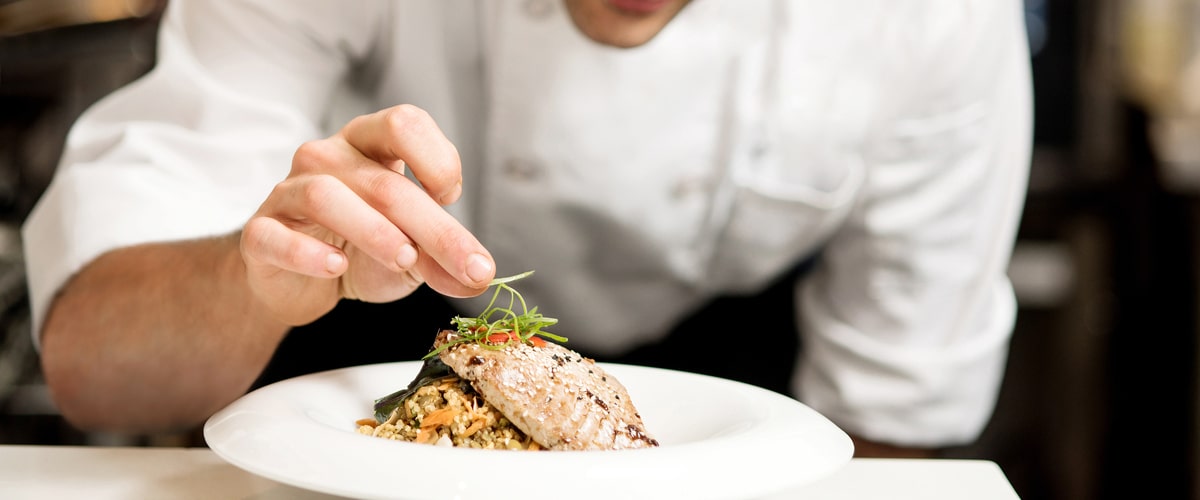The science of seafood allergies and how to avoid cross-contamination
Category : Food Stories, Party Ideas, Recipes, Press Room |
Posted : Mar 23, 2023
Are you allergic to seafood and find that shopping for groceries can be a cause of anxiety? Many people may not be aware of the science behind food allergies, the causes, and possible cross-contamination within the kitchen. Today we are applying some knowledge to those who suffer from an allergy to seafood. If adverse reactions are experienced after eating delicate fish or crustaceans then this blog post is here to help! Get ready for some powerful insights on how to avoid triggering your allergies through a better understanding of ingredients, careful ingredient selection as well as safe cooking practices so that you can make healthy lifestyle choices with confidence!
Understanding the Science of Seafood Allergies - Overview of common allergens and how they affect the immune system
Diving into the world of seafood can be both a delightful culinary adventure and a potential minefield if you're one of the millions who suffer from seafood allergies. With the abundance of sea creatures that grace our plates, it's essential to understand the science behind common seafood allergens and how they can wreak havoc on our immune systems. It all starts with proteins found in fish, shellfish, and other marine dwellers, which can trigger an immune response that ranges from mild to life-threatening. So, bearing the hat of a keen food blogger, let's plunge into this fascinating arena to educate ourselves on how our bodies recognize these allergens and react with such intensity. Knowing the cause of our bodily reactions to these edible ocean inhabitants allows us to make informed choices in our food journeys while not missing out on the magical flavors and textures that seafood has to offer.
Defining Cross-Contamination - Exploring common sources of cross-contamination and things to look out for
Cross-contamination is a term that might sound like the title of a sci-fi thriller, but its implications are all too real, especially in the sphere of food safety. As a foodie myself, it's crucial to be aware of the seemingly invisible invaders that hide in plain sight, just waiting to transfer from one food item to another. Hidden assailants, such as bacteria, viruses, allergens, and toxins, effortlessly glide from one surface to the next, compromising food safety and well-being. You may have encountered cross-contamination unknowingly in your kitchen when using the same cutting board to prepare raw chicken and fresh veggies, or even when stacking allergen-infused baked goodies near their allergy-friendly counterparts at your favorite bakery! So, let's band together in uncovering these sneaky food-safety deviants by being cautious, vigilant, and informed about common sources and best practices because spreading flavor and deliciousness should be our only concern!
How to Avoid Cross-Contamination in the Kitchen - Tips and tricks for keeping your kitchen free from cross-contamination risks
As a food blogger extraordinaire, I know just how essential it is to keep your kitchen free from cross-contamination risks! Picture this: you're lovingly crafting a meal to post about, and the last thing you want is an unintentional mix of ingredients that could lead to foodborne illnesses or simply ruin the intended flavors. A few of my trusted tips and tricks for avoiding cross-contamination in the kitchen include using separate cutting boards for different food items - think one for veggies and another for meats - as well as cleaning your utensils and work surfaces thoroughly in between tasks. Paying extra attention to raw ingredients that are prone to contamination, such as poultry, is also crucial. And never forget that your hands can be an unexpected culprit, so washing them frequently and properly must always be a priority! With a mindful approach and these handy hacks, you'll find that maintaining a clean and safe cooking space is a piece of cake - or the most scrumptious pie, for that matter!
The Benefits of Separating Food Preparation Areas - Understanding the importance of having designated areas for seafood, meat, poultry, and vegetable prep
As a dedicated food blogger, I've encountered countless awe-inspiring kitchens throughout my culinary adventures, and the one element that truly distinguishes the most impeccable ones is the organization of designated food preparation areas. There's a sense of harmony and ease when you enter such a kitchen, where distinct spaces for seafood, meat, poultry, and vegetable prep create a seamless flow of culinary creativity. What's more, the artistry of these dedicated stations goes beyond aesthetics; they offer invaluable benefits for preserving the integrity and quality of your dishes, ensuring no cross-contamination takes place. It's thrilling to witness the magic of combining flavors in a well-thought-out cuisine while upholding crucial safety and hygiene standards. This is a novel approach that all food connoisseurs should indulge in to enhance their gastronomic experience, as well as to take their culinary skills to phenomenal heights with a zen-like finesse.
Knowing When You're at Risk - Identifying key areas of risk when preparing seafood dishes and potential warnings signs

Diving into the world of seafood dishes can be both a gastronomic adventure and a delicate dance. It's essential to recognize key areas of risk and potential warning signs to ensure a delicious and safe culinary experience. One of the foremost concerns is to confirm the freshness of your seafood, as this not only guarantees the best flavor but also lessens the risk of foodborne illnesses. Be sure to give your fish a good sniff test: a fresh, oceanic smell is a green light, while an off-putting, ammoniated aroma means it's time to pass. Another vital aspect to pay attention to is proper storage and handling. Make sure your seafood is stored at the correct temperature and always follow safe food handling practices like washing your hands and avoiding cross-contamination. Finally, always cook your seafood to the recommended internal temperature to eliminate any potential pathogens. By being aware of these critical risk areas and staying vigilant, you'll be well-equipped to whip up an ocean of delectable seafood dishes for you and your loved ones to enjoy!
Tips for Shopping Safely - A guide on how to shop safely for seafood products to avoid allergies and cross-contamination risks

As a food blogger, I know how thrilling it is to explore diverse and scrumptious seafood dishes that tease our taste buds. However, it's crucial to prioritize safety while shopping for seafood products to eliminate the risks of allergies and cross-contamination. Delightfully, I've got you covered with an insightful guide that'll empower you to make the safest seafood choices. Firstly, always keep an eye out for freshness; vivid colors, delightful smells, and intact packaging are surefire indicators of premium quality. Secondly, inquire about the source to ensure it's from a reputable supplier or sustainable farm. If you're prone to allergies, don't shy away from asking for assistance from the store attendants, as they can point you towards low-allergenic options. Lastly, be sure to store your seafood separately in your cart and bag to avoid accidental mingling with other food items. Practice these little yet impactful steps, and you'll be indulging in mouth-watering seafood dishes without a worry in the world!
In conclusion, properly understanding and avoiding the risks associated with seafood allergies and cross-contamination is an essential aspect of maintaining a safe and healthy kitchen. Everyone has the right to a safe eating experience, so it pays to be aware of how to avoid both allergies and cross-contamination. By implementing the tips discussed in this blog post into your kitchen practices, you'll be able to reduce the risk of both forms of contamination while also ensuring a safer eating experience for yourself, your family, and your guests. It's also important to remember that if someone in your home suffers from a seafood allergy, additional safety protocols are necessary when preparing meals for them - isolating preparation areas for meat, poultry, vegetable, and seafood dishes is crucial for managing potential allergic reactions. Finally, don't forget about Marky's fantastic range of seafood! Whether you’re looking for delicate calamari or succulent prawns you're sure to find something perfect amongst their amazing selection - so make sure to try out some of these amazing seafood dishes today!













